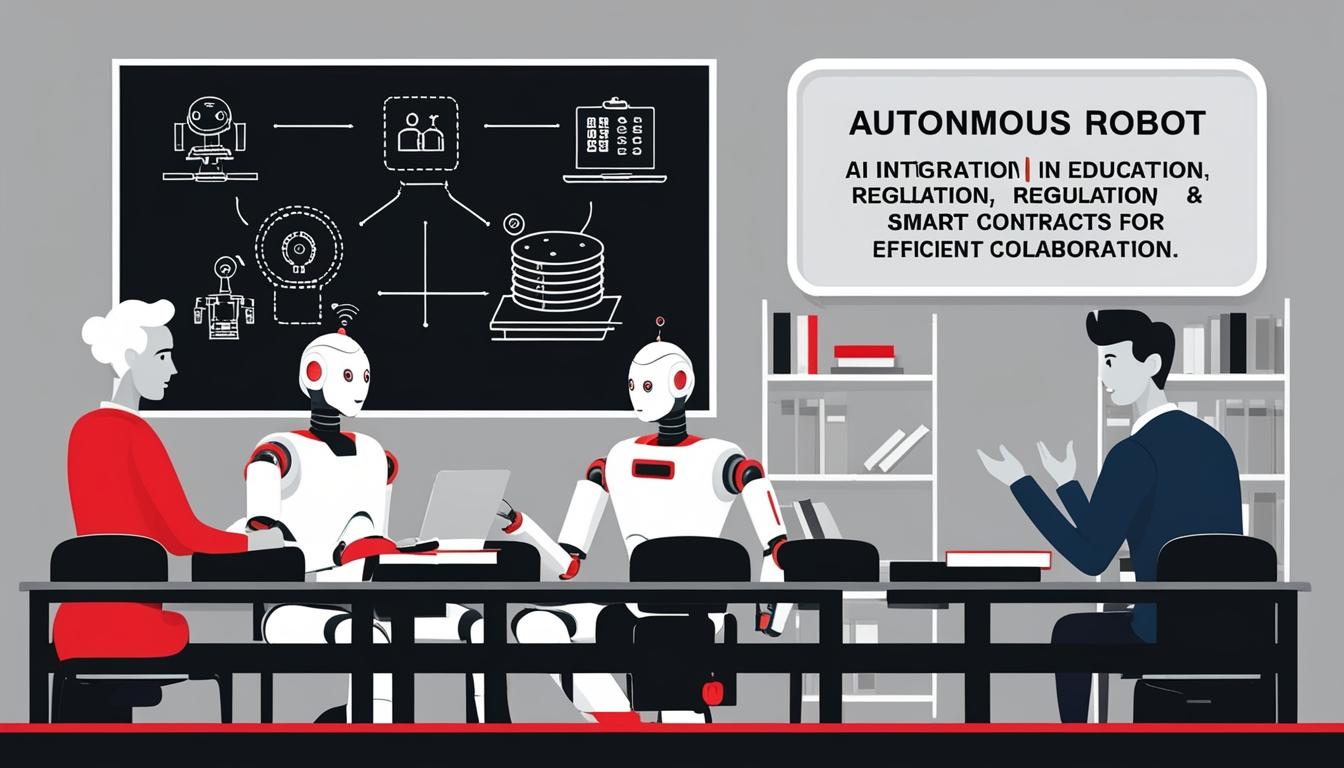The landscape of artificial intelligence (AI) and autonomous robotics is rapidly evolving, driven by advancements in large language models and generative AI that enable machines to plan, learn, and interact with the physical world. These developments are not merely theoretical; they have practical implications that could reshape various sectors including education, healthcare, and defence.
The deployment of autonomous robots that can think and learn raises significant questions regarding integration into human society. Current systems are predominantly designed for humans, often making assumptions about traits like fingerprints or birthdates, which do not apply to machines. There is considerable regulatory uncertainty around how to govern these "thinking machines". In light of this, the publication highlights the need for a comprehensive global system that supports transactions and decision-making involving both humans and autonomous systems. The emergence of decentralised crypto networks is noted as a promising framework to facilitate such interactions, ensuring that regulations can keep pace with technology, especially as these machines begin to take on increasingly complex roles in society.
Decentralised governance structures, such as decentralised autonomous organisations (DAOs), are gaining attention for their potential to enhance research and development across robotics and AI sectors. Traditional funding sources have often proven slow and restrictive, hindering progress. New token-based models allow for more fluid investment opportunities, presenting everyday investors with chances to participate in this burgeoning market. The publication cites that these models not only streamline funding but also open doors for innovative business strategies, including revenue-sharing with data or model providers, all facilitated via smart contracts.
The benefits of autonomous robots are underscored in critical areas facing workforce shortages. Research by UNESCO has identified an urgent need for millions of new teachers globally. Autonomous robots could serve as educational assistants, providing tailored support in the classroom and helping to bridge the educational gap. Similarly, the World Health Organisation has warned of a looming health workforce crisis, with significant shortfalls in sectors such as nursing and primary care expected to grow markedly. Here again, autonomous technology has the potential to optimally support healthcare professionals, whether through patient monitoring, logistical tasks, or assisting with surgical procedures. The diverse functions of robots in healthcare contexts could lead to enhanced productivity and improvements in patient care—essential as demands on these sectors increase.
In the realm of defence, autonomous systems—including drone swarms—are already making significant strides, executing missions deemed too dangerous for human operatives. The ongoing development of safer and more effective robotic technologies could transform how defence operations are conducted, capitalising on their ability to perform complex tasks in challenging environments.
What may seem like a glimpse into a futuristic scenario is already being realised, as observed through the utilisation of platforms like Ethereum. This blockchain technology is reportedly being employed today to structure decisions and actions for AI systems and autonomous robots, facilitating secure transactions among them. The open nature of these decentralised networks is integral to the collaborative efforts of robotics developers, allowing for the rapid sharing of data and innovations that propel the technology from prototypes to real-world applications, especially in environments like hospitals and educational institutions.
The advent of decentralised ledgers presents new opportunities for coordination among various robotic entities, helping them to interact without the need for centralised intermediaries. This type of system mirrors traditional command and control models used in military operations, albeit within a decentralised framework that promotes transparency and trustworthiness.
Interactions between robots and humans, as well as between different robots, have the potential to be streamlined through smart contracts, leading to efficient task allocation and resource sharing. Furthermore, privacy-centric systems may protect sensitive information, such as medical data, enhancing the trust required for human-robot collaborations.
As the field of AI and robotics matures, the implications of these advancements are becoming clearer. While this involves navigating regulatory challenges and addressing public concerns regarding safety and ethics, the ongoing development of robust frameworks and technologies suggests a future where autonomous systems effectively augment human capabilities across numerous sectors.
Source: Noah Wire Services
